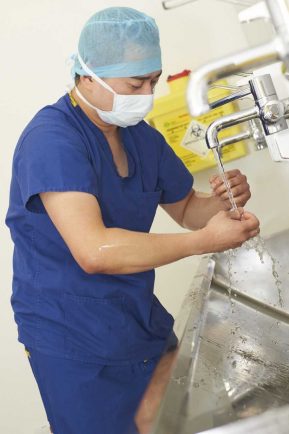WAITING times for accident and emergency treatment for patients in the Solihull area have hit a new record low – again.
Newly published figures from NHS England for last month, December 2019, show 37 per cent of A&E patients treated by the University Hospitals Birmingham Trust waited over four hours to see doctors.
Just 62.8 per cent of patients were treated within the four-hour target, indicating month-on-month decline.
As we reported, it was 64.7 per cent in November, and 66 per cent in October.
December’s performance was again among the worst in the country, at well below the national average of 79.8 per cent of patients seen within four hours.
The NHS target, introduced by former Prime Minister Tony Blair in 2004, is that 95 per cent of patients should be seen within four hours.
That government benchmark has not been met by the Birmingham trust since July 2015.
People living in Solihull borough attend the trust’s major A&E units at Heartlands Hospital and Queen Elizabeth Hospital in Birmingham.
A spokesperson for University Hospitals Birmingham NHS Foundation trust which runs the QE, Heartlands, Good Hope and Solihull hospitals, said: “We are continuing to experience significant increases in the number of people attending our A&E departments.
“In December we saw over 35,000 patients in A&E, however a large number of these patients could have been seen in more appropriate settings by other healthcare professionals such as GPs or pharmacists.
“We would urge anyone who is unsure whether they should attend A&E in Birmingham and Solihull to use Ask A&E – a free, quick and easy-to-use web-based app that provides clear advice on where to go after providing their symptoms.
“Patients are also asked to ‘choose well’ and use alternatives to A&E where possible. Pharmacies are able to provide excellent support and advice for members of the public while walk-in centres and urgent care centres have capacity to see patients who have been unable to access same-day GP appointments – often with drastically shorter waiting times than they might experience in A&E. At the same time many GP practices have extended their access to open later into the evenings and on weekends.”
Professor Stephen Powis, NHS medical director, said: “A&Es across the country are currently very busy – in 2019 we treated over a million more patients in our A&Es than the previous year.
“We have got more hospital beds open than last winter, but flu has come early and is around twice as high as this time last year.
“For the public there is still time to get your flu jab, and remember to use the free NHS 111 phone and online service and your local pharmacist.
“The continued increase in people’s need for care underlines the need for more beds and staff across hospital and community services, which is why the Government’s commitment to increase the number of nurses by 50,000 and invest in new and expanded facilities will be crucial over the coming years.”
Dr Katherine Henderson, President of the Royal College of Emergency Medicine, the professional association of emergency doctors, said: “The NHS is struggling to escape its spiral of decline. With a record low in terms of four-hour performance and highest ever number of 12 hour waits, this will have been a miserable Christmas period for many patients and staff alike.
“Compared to December 2018, the number of patients waiting for over 12-hours has increased by over 700 per cent. This is from the decision to admit – the actual figure from time of arrival will be much, much higher. This is terrible for patients and puts lives at risk.
“Our hardworking staff continue in the face of adversity, working in a system that for too long has been understaffed and underfunded, with the flip side of the problem – social care – completely ignored. It is little wonder that morale is low.
“Change is coming, but slowly. The recent promise of 40 new hospitals from the government must be kept, but the more pressing need is to address the capacity issues of the ones we do have. Many of our existing Emergency Departments are too small, run down and need of repair – these must be fit for purpose for the next decade of clinical care.
“We physically do not have space for patients who are kept waiting, many of whom will be waiting to be tested using equipment that has either seen better days or that we have too little of. We have the lowest level of both CT and MRI scanners per capita in comparable nations.
“Putting staffing issues aside, without the space or equipment to do the job performance stands little chance of recovery. We urge the government to use March’s budget as an opportunity to increase capital budgets within the NHS.”











